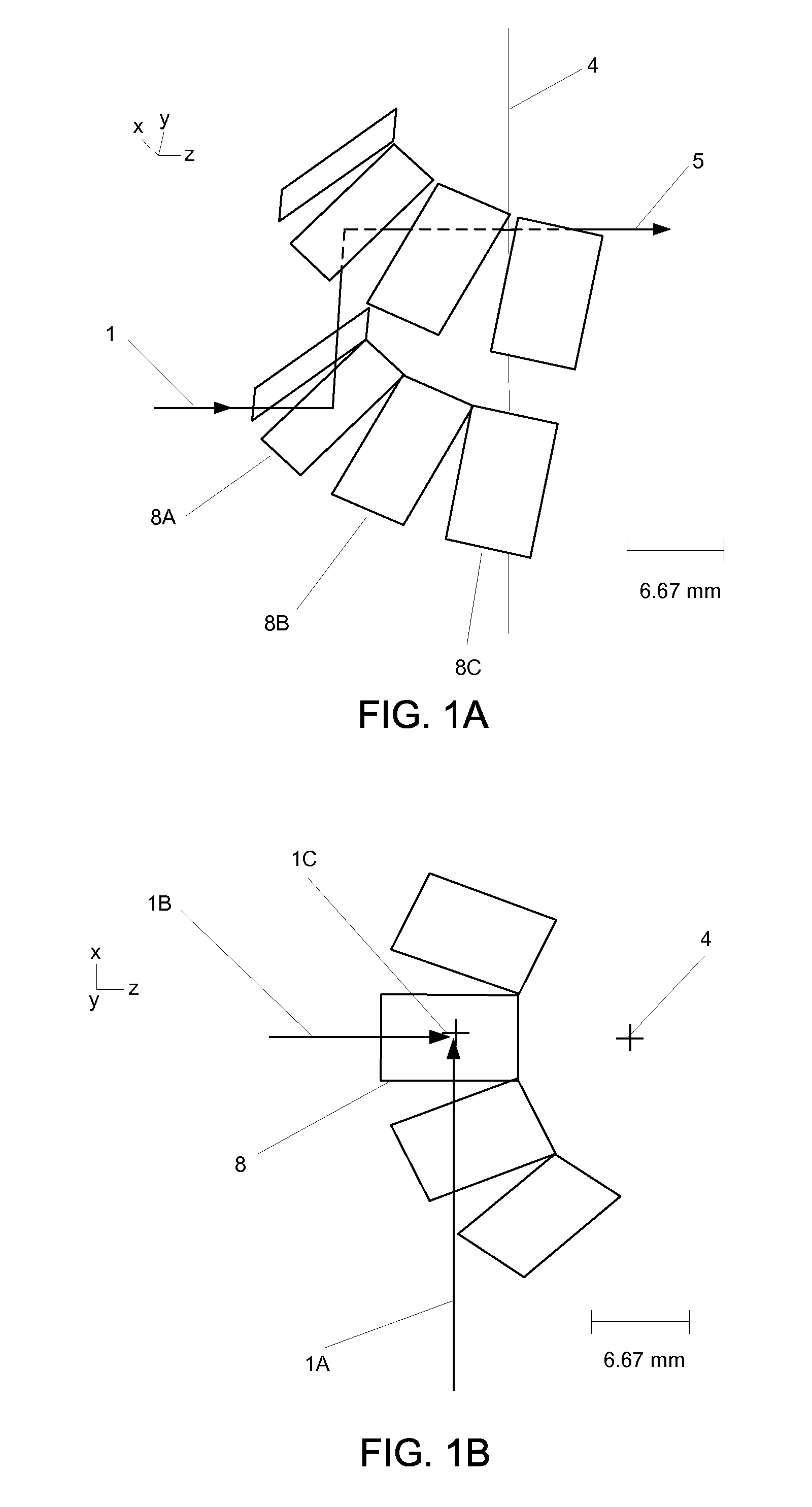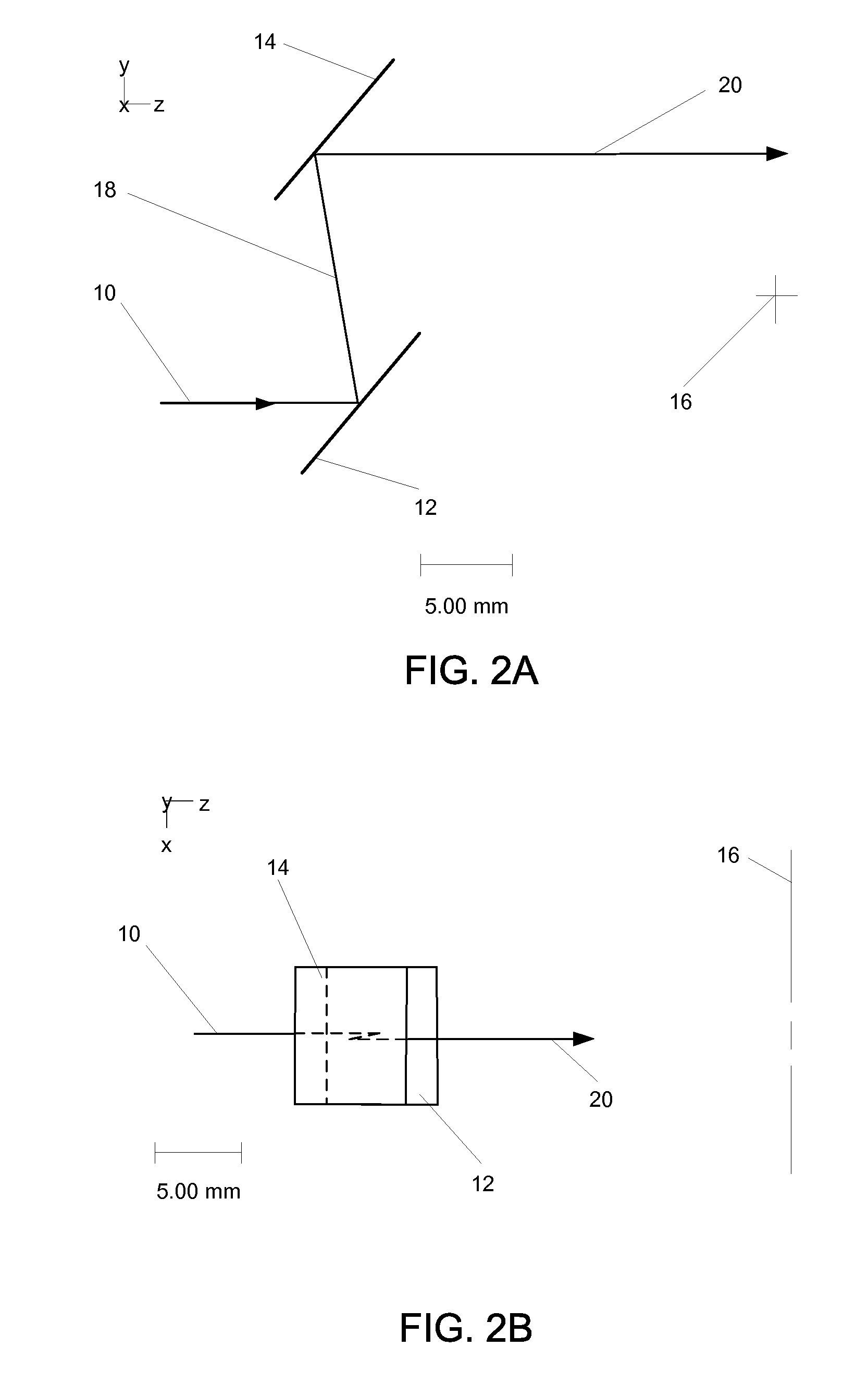Optical pattern generator using a single rotating optical component with ray-symmetry-induced image stability
a technology of optical pattern generator and rotating optical component, which is applied in the field of optical pattern generator with ray-symmetry-induced image stability, can solve the problems of limiting the scan rate, unsuitable for certain applications, and restricting the patterns that can be generated, so as to reduce thermal blooming and reduce the speed or radiometric efficiency of the system
- Summary
- Abstract
- Description
- Claims
- Application Information
AI Technical Summary
Benefits of technology
Problems solved by technology
Method used
Image
Examples
Embodiment Construction
[0037]FIG. 1A is a diagram of an optical pattern generator illustrating various aspects of the invention. In this example, a rotating component 9 is divided into many sectors 8A, 8B, 8C, etc., which are arranged in a circle centered on the rotation axis 4 of the rotating component 9. An optical beam 1 is incident on the different sectors 8 as they rotate through the beam. At least a majority of the sectors 8 includes optical elements that are substantially gut-ray symmetric in the plane comprising the axis of rotation and the direction of the incident gut ray, as the rotating component 9 is rotated around its axis of rotation 4 and the sector 8 rotates through the incident optical beam 1.
[0038]As the component 9 rotates, the sectors 8 rotate through the incident optical beam 1. The point where a sector 8 is mid-way through its rotation through the optical beam 1 will be referred to as the mid-rotation position or mid-rotation angle. Each sector 8 deflects the incoming optical beam 1...
PUM
 Login to View More
Login to View More Abstract
Description
Claims
Application Information
 Login to View More
Login to View More - R&D
- Intellectual Property
- Life Sciences
- Materials
- Tech Scout
- Unparalleled Data Quality
- Higher Quality Content
- 60% Fewer Hallucinations
Browse by: Latest US Patents, China's latest patents, Technical Efficacy Thesaurus, Application Domain, Technology Topic, Popular Technical Reports.
© 2025 PatSnap. All rights reserved.Legal|Privacy policy|Modern Slavery Act Transparency Statement|Sitemap|About US| Contact US: help@patsnap.com



